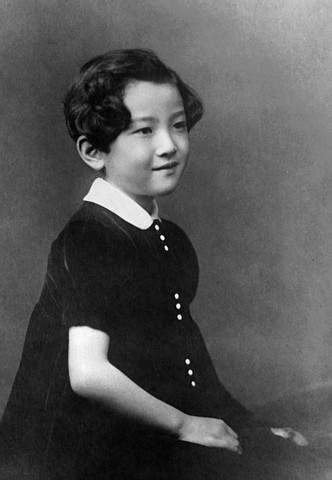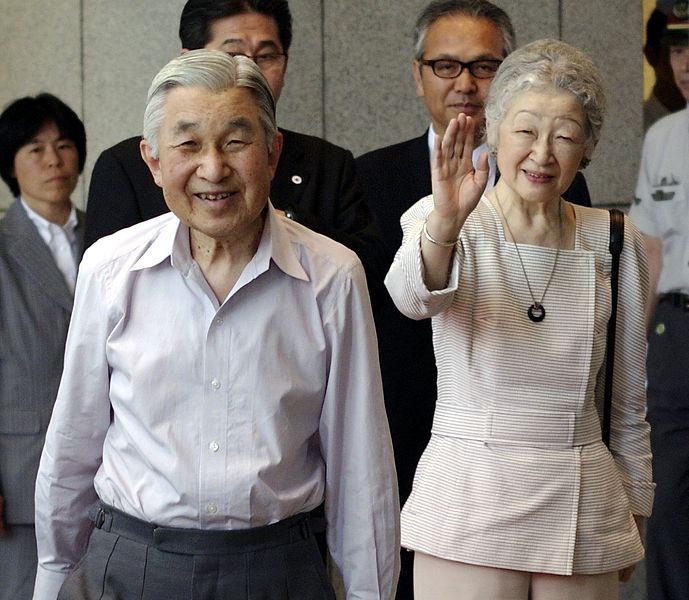by Susan Flantzer © Unofficial Royalty 2014

Queen Letizia of Spain; Credit – Wikipedia
Letizia Ortiz Rocasolano was born on September 15, 1972, in Oviedo, Asturias, Spain. She is the eldest of three daughters of Jesús José Ortiz Álvarez, a journalist, and his first wife, María de la Paloma Rocasolano Rodríguez, a registered nurse and hospital union representative.
Letizia was christened on September 29, 1972, at the San Francisco de Asís Church in Oviedo, Asturias, Spain. Her godparents were Francisco Rocasolano Rodríguez, her maternal uncle, and Cristina Ortiz Álvarez, her paternal aunt.
Regarding Spanish naming customs, using Letizia Ortiz Rocasolano, the first surname or paternal family name is Ortiz and the second surname or maternal family name is Rocasolano. Letizia’s parents divorced in 1998 and her father has since married again to a fellow journalist, Ana Togores. Letizia has two younger sisters, Telma (born 1973) and Érika (1975-2007). It was widely reported that Letizia’s sister Érika died from an intentional prescription drug overdose.
In her hometown of Oviedo, Letizia completed her primary education at the Colegio Público La Gesta de Oviedo and started her secondary education at the Instituto Alfonso II. Due to her father’s job as a journalist, the whole family moved to Madrid in 1987 where Letizia continued her secondary education at the Instituto Ramiro de Maeztu. Letizia has a Bachelor’s Degree in Journalism from Complutense University of Madrid and a Master’s Degree in Audiovisual Journalism from the Institute for Audiovisual Journalism Studies.
In 1998, Letizia civilly married Alonso Guerrero Pérez, a high-school literature teacher, and the couple divorced in 1999. Since this marriage was only a civil ceremony, the Roman Catholic Church did not need to issue an annulment in order for Letizia to have a religious wedding in the future.
While Letizia was pursuing her university degrees, she worked for La Nueva España, a daily newspaper published in her hometown of Oviedo, ABC, a Spanish national daily newspaper, and Agencia EFE, a Spanish international news agency. After Letizia completed her university, she took a position at Siglo XXI, a newspaper in Guadalajara, Mexico.
When she returned to Spain, Letizia worked for the Spanish version of the financial channel Bloomberg before moving to the CNN+, a Spanish 24-hour television news channel, where she spent two years broadcasting the news in the morning shift. In 2000, she received the Mariano José de Larra Award from the Press Association of Madrid as the most accomplished journalist under the age of 30.
In 2000, Letizia began working at Televisión Española, the national state-owned public television broadcaster in Spain where she worked for the news channel 24 Horas. By 2002, Letizia was anchoring the weekly news report program Informe Semanal and then the daily morning news program Telediario Matinal. In August 2003, Letizia started anchoring the daily evening news program Telediario 2, the most-watched newscast in Spain. During most of this time period, Letizia was maintaining a secret relationship with Felipe, Prince of Asturias, the heir to the Spanish throne.
It was in November 2002 while covering the Prestige oil tanker disaster, Spain’s largest environmental disaster, that Letizia’s life would change forever. Felipe, Prince of Asturias had flown to the area to offer his support to the communities worst affected by the oil spill. Although the couple had met the year before at a mutual friend’s dinner party, it was during this terrible disaster that they fell in love. Their relationship was kept a closely guarded secret until the engagement was announced on November 1, 2003.
The couple was married on May 22, 2004, at the Santa María la Real de La Almudena Cathedral in Madrid, Spain. It was the first royal wedding held in Madrid since the wedding of Felipe’s great-grandparents King Alfonso XIII of Spain and Princess Victoria Eugenie of Battenberg in 1906.
The couple has two daughters:
- The Princess of Asturias (Leonor de Todos los Santos de Borbón Ortiz), born October 31, 2005, at the Ruber International Clinic in Madrid, Spain
- Infanta Sofía (Sofía de Todos los Santos de Borbón Ortiz), born on April 29, 2007, at the Ruber International Clinic in Madrid, Spain

Queen Letizia with her family in 2019; Credit – Wikipedia
On June 2, 2014, King Juan Carlos, Felipe’s father, announced his intention to abdicate the throne in favor of his son. On June 18, 2014, King Juan Carlos signed the formal instrument of abdication and Felipe ascended the throne at midnight. At the same time, Letizia automatically became Queen of Spain. King Felipe VI was sworn in and proclaimed king on June 19, 2014, in a ceremony in the Congress of Deputies, the lower house of the Spanish legislature.
This article is the intellectual property of Unofficial Royalty and is NOT TO BE COPIED, EDITED, OR POSTED IN ANY FORM ON ANOTHER WEBSITE under any circumstances. It is permissible to use a link that directs to Unofficial Royalty.
Kingdom of Spain Resources at Unofficial Royalty
- Kingdom of Spain Index
- Line of Succession to the Throne of Spain
- Monarchs of a United Spain (since 1516)
- Profiles of the Spanish Royal Family
- Spanish Royal Burial Sites
- Spanish Royal Christenings
- Spanish Royal Dates
- Spanish Royal FAQs
- Spanish Royal Links
- Spanish Royal Weddings
- Spanish Royal Residences


















































































